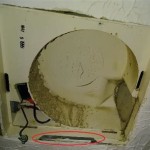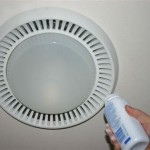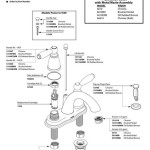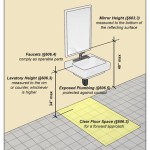Bathroom Extractor Fan Through Roof Installation
A bathroom extractor fan is a vital component for creating a healthy and comfortable environment in your home. These fans are designed to remove moisture, odors, and pollutants from the bathroom, preventing mold growth, condensation, and unpleasant smells. When it comes to installation, there are several options, with one popular method involving routing the fan through the roof. This article will delve into the process of installing a bathroom extractor fan through the roof, providing a comprehensive overview of the steps involved, along with essential considerations for a successful installation.
Benefits of a Roof-Mounted Bathroom Extractor Fan
Installing a bathroom extractor fan through the roof offers several advantages over other methods. Firstly, it eliminates the need for long runs of ductwork within the ceiling cavity, simplifying the installation process and reducing the potential for noise and air leaks. Secondly, roof-mounted fans often have a more direct and efficient path for expelling air, leading to improved ventilation performance. This is particularly beneficial for bathrooms located in areas with limited wall space or where installing vent ducts through the walls proves challenging.
Steps Involved in Installing a Bathroom Extractor Fan Through the Roof
Installing a bathroom extractor fan through the roof is a straightforward process that can be accomplished with basic DIY skills. Here’s a step-by-step guide to help you navigate the installation process:
- Plan and Choose the Location: Start by determining the optimal location for the roof-mounted extractor fan. Choose a spot that allows for a direct and unobstructed path for air discharge. Consider factors like roof pitch, proximity to existing vents, and aesthetic considerations. Ensure the chosen location complies with local building codes and regulations.
- Prepare the Roof Opening: Once you have determined the location, you need to create an opening in the roof. This can be done using a jigsaw or a circular saw, depending on the materials of your roof. Be sure to wear appropriate safety gear, including eye protection and a dust mask. Cut a hole slightly larger than the fan’s base to facilitate installation and allow for a secure fit.
- Install the Flashing: After creating the opening, install flashing around the hole. Flashing is a waterproof material that prevents leaks and ensures a watertight seal. It typically comes in metal or rubber options and should be chosen based on the materials of your roof. Secure the flashing using appropriate fasteners and silicone sealant for a weather-resistant seal.
- Install the Fan: Once the flashing is in place, you can mount the extractor fan to the roof opening. Most fans come with brackets that can be secured to the roof using screws or bolts. Make sure to properly align the fan and tighten the fasteners securely for a stable installation.
- Connect the Ductwork: Connect the ductwork to the fan outlet. Use a flexible duct hose or rigid duct pipes, depending on the fan model and your preference. Ensure a secure connection to prevent air leaks and maximize efficiency. You may need to use duct tape or clamps to secure the connections.
- Install the Vent Cover: Finally, install the vent cover over the roof opening to protect the fan from the elements. Many fans include a built-in vent cover, while some require separate installation. Ensure the vent cover is securely mounted and provides a weatherproof seal.
Key Considerations for Bathroom Extractor Fan Installation
When installing a bathroom extractor fan through the roof, there are several key considerations to keep in mind to ensure a successful installation:
Ventilator Fan Size and Capacity
The size and capacity of the extractor fan are crucial factors in determining its effectiveness. A fan that is too small will not remove moisture and odors efficiently, while one that is too large can be noisy and unnecessarily expensive. Consider the size of your bathroom and the level of ventilation required to select the appropriate fan size and capacity.
Noise Levels
Bathroom extractor fans can generate noise, especially when operating at high speeds. Consider the noise levels of different fan models and select a fan that operates within acceptable noise levels for your bathroom. You can also use sound-dampening materials to reduce noise transmission, such as acoustic insulation or duct baffles.
Energy Efficiency
Energy efficiency is increasingly important for reducing energy consumption and costs. Consider choosing an extractor fan with an Energy Star rating or high-efficiency motors to minimize energy usage. Look for models with features like automatic shutoff timers and humidity sensors to further optimize energy efficiency.

Installing A Bathroom Fan Fine Homebuilding

Bathroom Exhaust Fan Can Vent Out Through The Wall Or Up Roof Building America Solution Center

Humidity Sensing Fans For Bathrooms

Quick Tip 23 Fixing A Drip At The Bathroom Fan Misterfix It Com

Why Does My Bathroom Ceiling Fan Drip Foothills Roofing Calgary

Bathroom Vent Piping To Near Exterior Inspecting Hvac Systems Internachi Forum

Roof Ventilation Tile Bathroom Exhaust Vent Extractor

Venting A Bath Fan In Cold Climate Fine Homebuilding

Pin On Dream Home Collection
Installing A Bathroom Extractor Fan Mig Welding Forum
Related Posts







